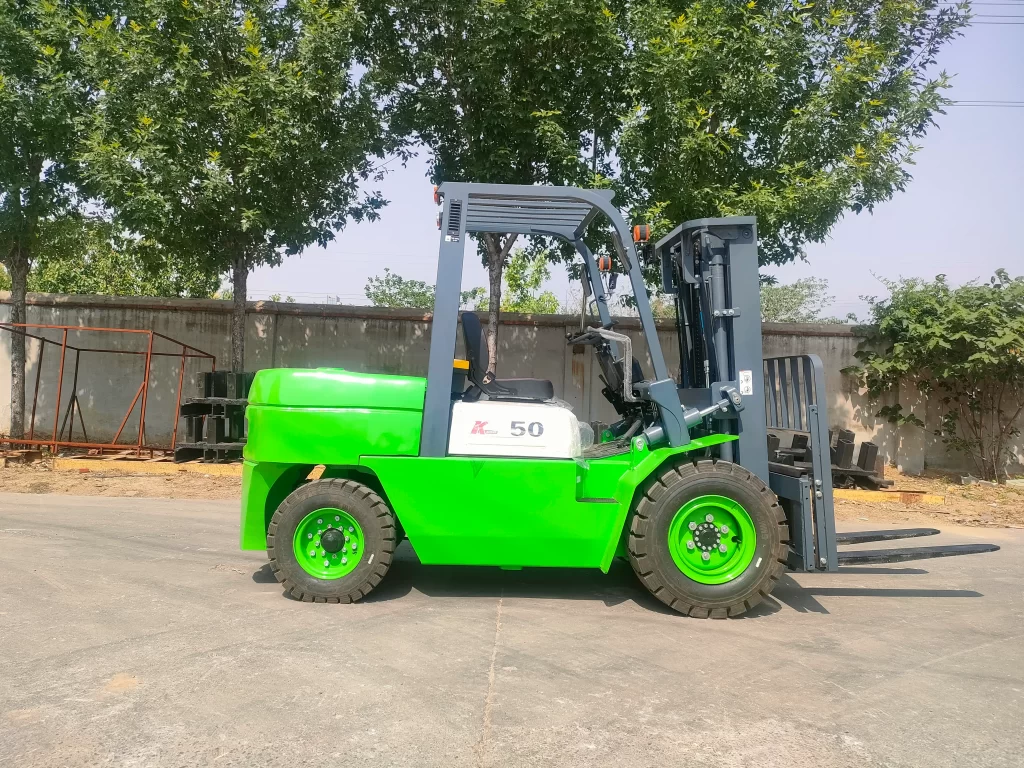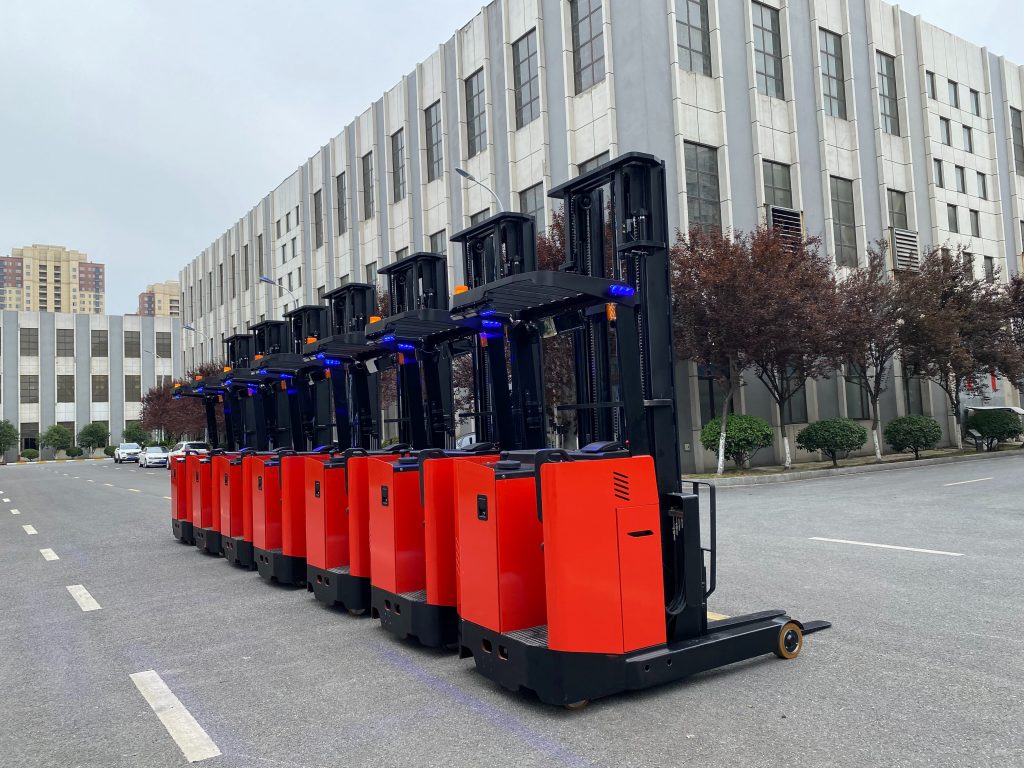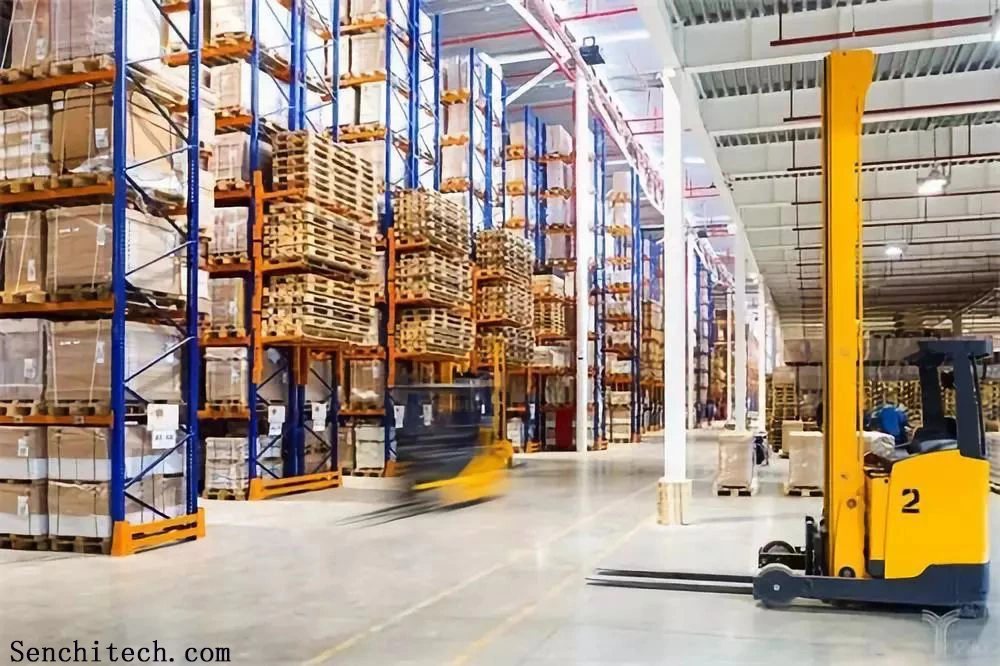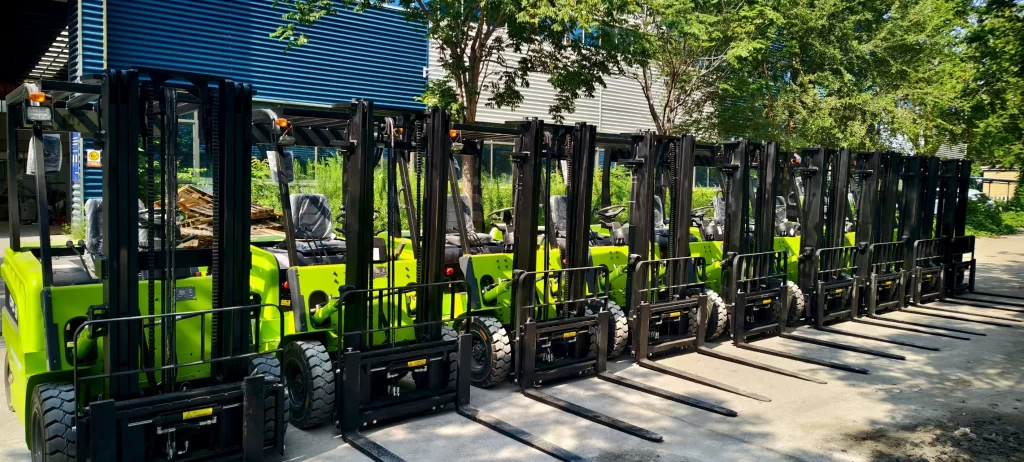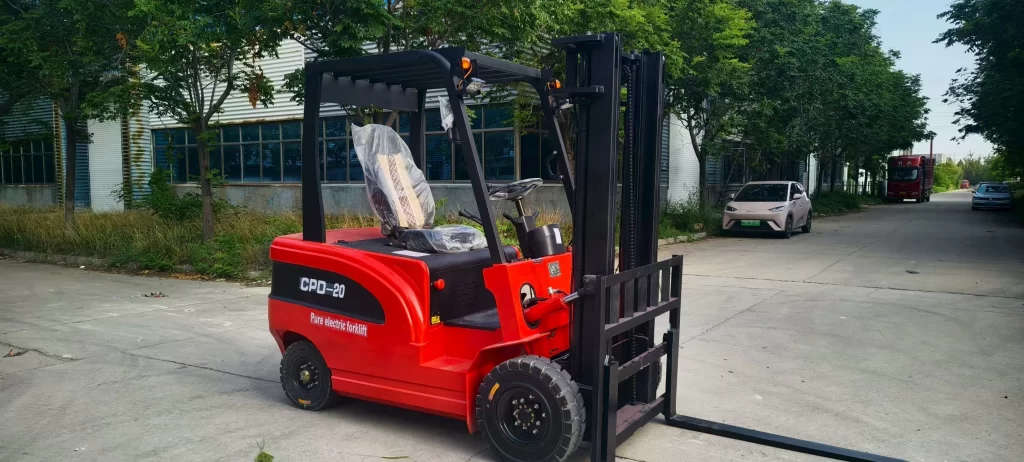What’s the difference between a reach truck and a forklift? How should you choose one based on your warehouse needs?
Warehouse reach trucks are a type of electric forklift, but their performance and application scenarios differ significantly from counterbalanced forklifts. This article provides an in-depth comparison based on five key dimensions: mast design, operating height, aisle requirements, load capacity, and applicable scenarios. This will help you choose the most cost-effective equipment for high-bay and narrow-aisle warehouses, avoiding costly mistakes.
I. A Quick Overview of Key Concepts: What are they?
1. Counterbalanced Forklift
Definition: A lifting vehicle with lifting forks mounted on the front and a counterweight at the rear, also known as a forklift, includes both electric and internal combustion forklifts.
Basic Features: High lifting capacity, up to a rated load of 10 tons, suitable for medium-height racks (usually under 8 meters) or elevated locations. Forklifts are used for loading, unloading, stacking, and moving piece goods within ports, stations, and businesses. By replacing the forks with various attachments, these vehicles can handle a wide range of cargo, such as bulk materials with a bucket.
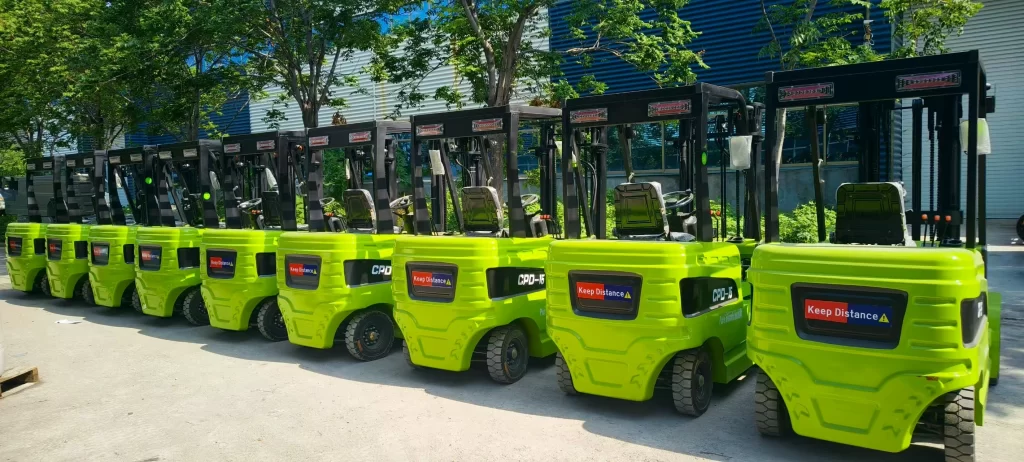
2. Reach Truck (VNA)
Definition: A high-bay warehouse lifting equipment designed for extremely narrow aisles. Its forks and mast can extend far forward.
Basic Features: Reach trucks are a type of warehouse truck and are categorized by operating method as either sit-down or stand-up. They operate in extremely narrow aisles and offer extremely high lift heights (often exceeding 15 meters). Reach trucks share features with both counterbalanced forklifts and electric stackers. When the mast is fully extended, the load’s center of gravity falls outside the fulcrum, acting like a counterbalanced forklift. When the mast is fully retracted, the load’s center of gravity falls inside the fulcrum, acting like an electric stacker. The combination of these two features gives this forklift the advantages of operational flexibility and high payload capacity, while maintaining minimal bulk and weight, minimizing operational space and significantly improving warehouse space utilization.
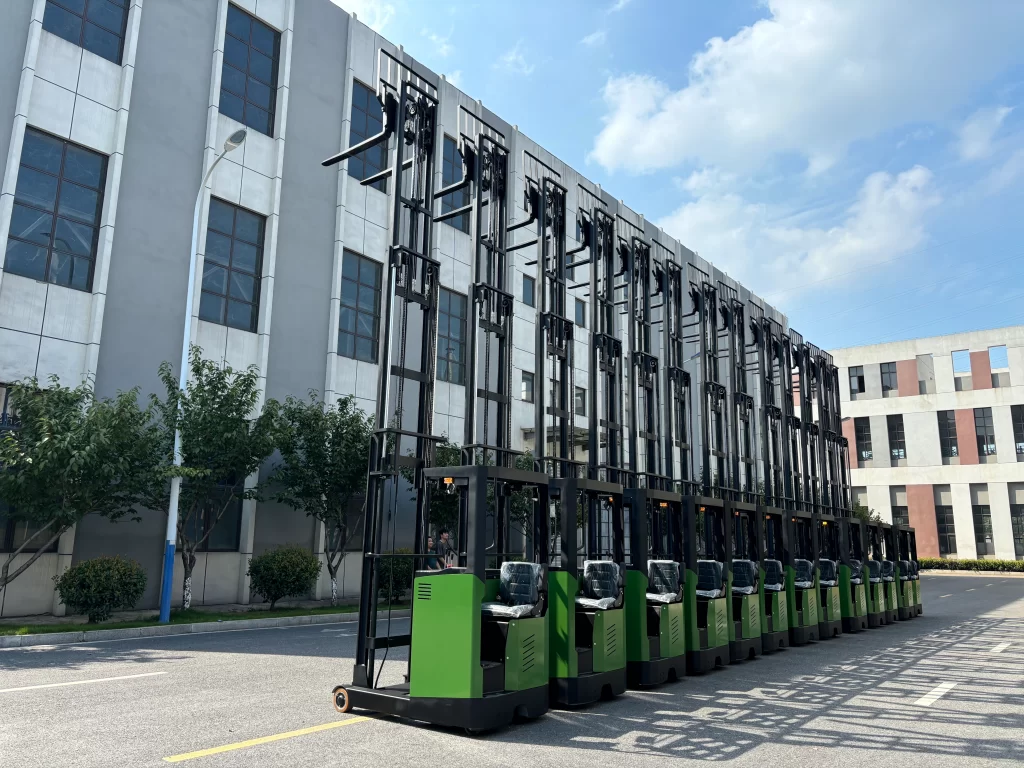
II. In-Depth Comparison of Five Core Differences
| Feature | Counterweight forklifts | Reach Truck |
| 1. Mast & Fork Design and Working Principle | “The vehicle moves, the forks do not.” The vehicle moves forward to pick up/place goods. The mast can tilt forward and backward and often has side-shift functionality to position loads. | “Both the vehicle and forks move.” The truck travels within the aisle. The forks can extend significantly forward (and often side-shift) to access pallets directly from the racking. |
| 2. Aisle Width Requirement (Key Difference) | Requires a wider aisle (typically 2.7 – 3.5 meters), as the entire truck needs space to turn within the aisle. | Requires a very narrow aisle (typically 1.6 – 2.0 meters). Its smaller turning radius allows it to turn in tight spaces. Some models (like 4-directional trucks) can travel sideways, requiring an aisle width just wider than the truck itself. |
| 3. Lifting Height & Storage Density | Lifting height is generally limited (approx. 3 – 8 meters), making it suitable for low-level storage. | Lifting height can reach 15 meters or higher, maximizing the use of vertical space and resulting in far greater storage density. |
| 4. Efficiency & Cost | Lower purchase and maintenance cost. Suitable for outdoor use, wider aisles, high-frequency loading/unloading, and heavier loads. Its drawbacks are limited lift height (~8m max) and wasted space due to the need for wider operating aisles. Three-wheel electric models exist but have limited capacity (approx. 3T max). | Higher initial investment (truck cost). However, it offers extremely high space utilization, ideal for stacking lighter goods in confined areas. Lower unit storage cost in the long run, making it suitable for stable SKU storage and e-commerce warehouses. |
| 5. Operation & Personnel Requirements | Simple and easy to learn to operate. | More complex operation (especially models where the operator does not ascend). Requires a more skilled and experienced operator for full control. May require additional equipment like wireless cameras for high-level visibility. |
III. How to Choose?
Choose a counterbalanced forklift when:
Rack height ≤ 8 meters
Aisle width ≥ 2.7 meters
Flexible business, requiring frequent handling of different cargo locations
Limited budget
Choose a long-reach forklift when:
Rack height ≥ 10 meters
Warehouse space is extremely expensive, requiring compact aisles
Striving for extremely high storage density and space utilization
Long storage cycles and relatively stable throughput
Sufficient initial investment budget
IV. FAQ
Q1: Are long-reach forklifts always more expensive than counterbalanced forklifts?
A1: Generally speaking, forklifts of the same tonnage, the former are more expensive than the latter.
Q2: Do warehouse reach forklifts require special surface conditions?
A2: Generally, they require relatively flat ground, such as indoor locations and warehouses. Counterbalanced electric forklifts can reach indoor locations.
Q3: Which forklift is more difficult to operate?
A3: Reach trucks are more difficult to operate.
Q4: Can both be used in cold storage environments?
A4: Both can be used in cold storage. Cold storage forklifts are increasingly gaining attention in the industry as essential transfer equipment in various processes. Battery forklifts are becoming the preferred choice for the food industry and cold chain logistics companies. Electric reach truck forklifts can also be customized as cold storage forklifts, capable of withstanding low temperatures and high humidity environments, and are also explosion-proof.
Conclusion
In summary, counterbalanced forklifts prioritize cost and payload. Electric forklifts, in particular, can be used both outdoors and indoors, making them a cost-effective indoor industrial vehicle. Their extended reach maximizes space and efficiency, making them essential high-rise forklifts for large warehouses and densely packed warehouses, maximizing the use of limited storage space.
Final advice: There is no best equipment, only the most suitable solution. Make your selection based on your actual warehouse layout, cargo characteristics, and business model. If necessary, consult a professional warehouse lifting equipment supplier for an on-site evaluation.
